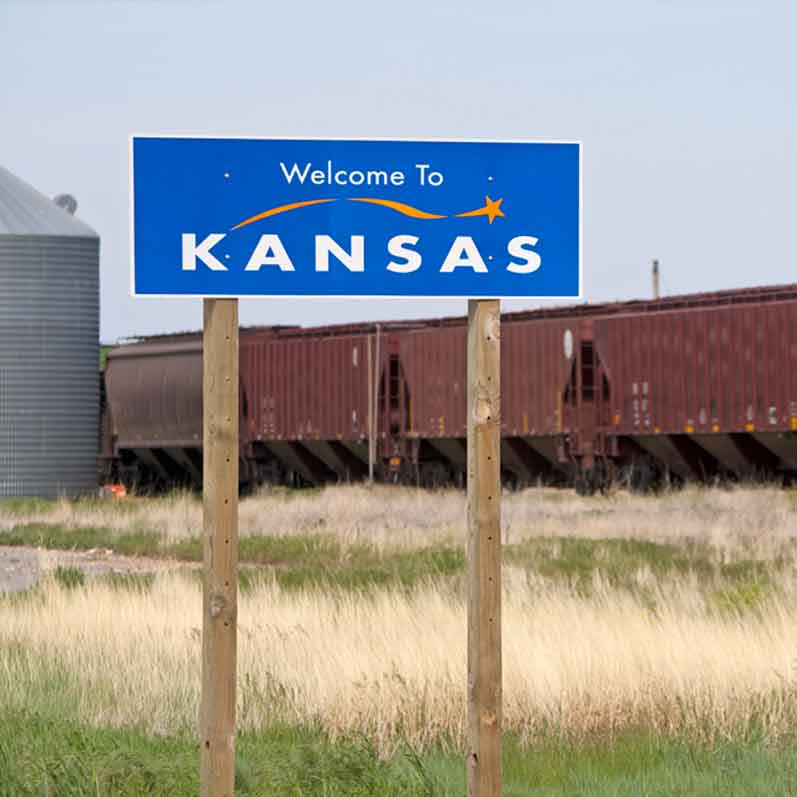Tariffs 101: What They Are and Their Potential Impact on Your Everyday Life in Junction City-Geary County

30 Apr 2025
News
Tariffs are a hot topic these days. They’re usually talked about in relation to how they impact the global economy or a country as a whole. But global tariffs have the potential to impact the residents and businesses of local communities, too.
Understanding what tariffs are, their history, and why they are put into use is important for anyone to understand. And that knowledge can help to shed some light on how a global tariff may impact your everyday life here in Junction City-Geary County.
What Are Tariffs?
A tariff is a tax that one country charges on products made in and/or coming from another country. This can sometimes result in imported goods becoming more expensive for consumers.
There are a few ideas that fuel a country’s desire to implement a tariff in the first place. Much like a game of chess, a tariff is often used in global trade to:
- Protect domestic industries from overseas competition
- Influence the number of foreign goods that enter a country
- Correct trade practices that seem unfairly balanced, with one country benefitting more than another
These can all be good things. However, the downside is that a tariff has the potential to slow economic growth by causing imported products to become more expensive, which results in less consumer spending.
In America, this is particularly true for items such as machinery (including computers and hardware), automobiles, pharmaceuticals, petroleum, furniture, bedding, mattresses, and plastics since consumer demand exceeds the domestic production of these products.
As far as numbers go, America, which is the largest importer of goods in the world, saw the total value of imports in 2024 reach $3.35 trillion, representing a 6% increase from 2023.
And most recently, the U.S. Department of Commerce Bureau of Economic Analysis reported that in January 2025, exports were $269.8 billion, $3.3 billion more than December 2024 exports. On the flip side, also in January 2025, imports were $401.2 billion, $36.6 billion more than December 2024 imports.
The History of Tariffs
Taxes on imported goods have been around for centuries and were first introduced in ancient times as a straightforward fee that was paid before any goods could enter a city market in Greece or Rome. Fast forward to the Industrial Age and tariffs were used to guard industries from cheaper imports, a conversation that is still prevalent today.
But it was the dawn of the 20th century that really saw a whirlwind of activity surrounding tariffs.
In an attempt to protect their own struggling economies during the Great Depression, many countries opted for sky high tariffs on imports from another country. As the number of exports were reduced, the international trade market plummeted, companies began losing money and were forced to lay off much of their workforce, kicking off a new set of economic headaches.
These events paved the way for the establishment of the General Agreement on Tariffs and Trade (GATT) in 1947, which eventually was replaced by the World Trade Organization (WTO) in 1995 as a way to reduce trade barriers, increase global commerce, create more jobs, and increase living standards.
Who Pays for Tariffs?
The cost of a tariff is one that a company typically passes along to the consumer. How? Simply by increasing the cost of their product.
For example, according to an S&P Global Mobility report in January 2025, a 25 percent tariff on a $25,000 vehicle from Mexico or Canada would add $6,250 to its import cost “with U.S. car dealers likely to pass most, if not all, of this increase to consumers.”
The silver lining, according to Tyson Jominy, vice president of data and analytics for J.D. Power, would be that consumers would also see an increase in the trade-in value of their existing vehicle.
How Tariffs Can Impact Local Economies
The impact of global tariffs, which are meant to inspire consumers to buy domestic goods over imports, can often trickle down to the local economy in a negative way and lead to a domino effect. Here’s how:
Small and Medium-Sized Businesses often don’t have the financial means to absorb increased taxes the same way a larger company can. Because of this, they may have to charge more for their product and/or service to make up for those losses.
When costs go up, their customers will often react by not buying as much or eliminating all unnecessary spending entirely.
Once consumer spending slows down, so does business revenue, which often leads to an increased risk of layoffs.
As people lose their jobs, they may be forced to relocate. And as the population dwindles, it has a negative effect on the local economy by way of reduced tax revenue, decline in local businesses and the consolidation or closure of schools.
We’re Here to Help!
Navigating any economic uncertainty can be a daunting task. That’s why the Junction City-Geary County Economic Development Commission is committed to supporting the community by partnering with regional economic agencies to present a wide variety of solutions to any challenge facing our local businesses.
From financial assistance to workforce development and retention, contact us today to learn more about the vast array of services we have to offer to help strengthen and grow our business!
More Topics











